Troubleshoot your GE dishwasher

GE dishwashers are known for their longevity (lasting many years) and quality. But even these highly regarded dishwashers can develop issues that might lead you to look for ways to fix your appliance.
As with any appliance that gets used regularly, you might experience some challenges with your GE dishwasher as parts get worn out or break down and need repair or replacement. Fortunately, many dishwasher appliance-repair strategies and troubleshooting tips are DIY, so you can take care of them yourself. Rather than let your dirty dishes pile up, see if these solutions might work for your washer.
This article walks you through common issues you might experience with your GE dishwasher and how you can resolve them.
Most common problems with GE dishwashers
As with any type of dishwasher — or appliance for that matter — your dishwasher can experience a variety of problems, particularly related to the flow and drainage of water in the appliance. Some common complaints with GE dishwashers include:
- The dishwasher isn’t draining.
- The detergent cup fails to work.
- The dishwasher isn’t filling with water as expected.
- The dishwasher door is leaking.
- The dishwasher emits a bad smell.
If any of these problems sound familiar, here’s what you can do about the issue.
How to fix a GE dishwasher not draining
Several problems can result from your GE dishwasher failing to drain properly, including leaking water. If you see water starting to pool in the bottom of your appliance, you might be able to fix the issue by going through the following steps.
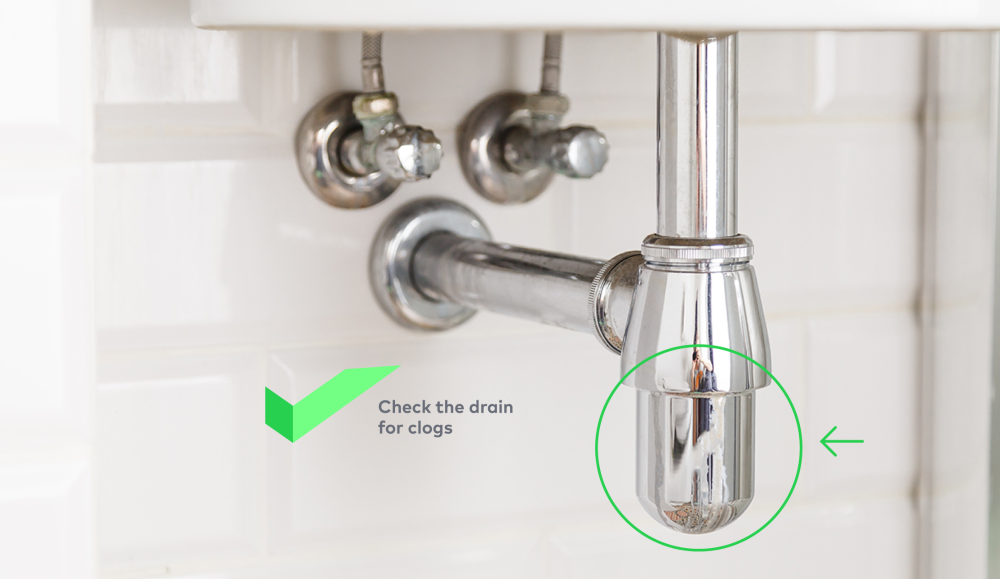
Check the drain for clogs
The first place to look in your dishwasher is for a clogged drainpipe. In some homes, the dishwasher drain connects with the garbage disposal’s drain tube under the kitchen sink, and this drain hose can become clogged. If that’s the sitwwwion you’re in, detach the drain hose and clear it out to see if that helps the water flow more easily.
As a note, if you notice any draining problems immediately after installing the dishwasher, it might be that the knockout drain plug on the garbage disposal wasn’t removed as expected. You will need to fix this to allow the water to drain.
To prevent draining issues, it’s also a good idea to look for food debris that could be around the drain line. If you see any bits of food, clear them out and see if that helps with the standing water.
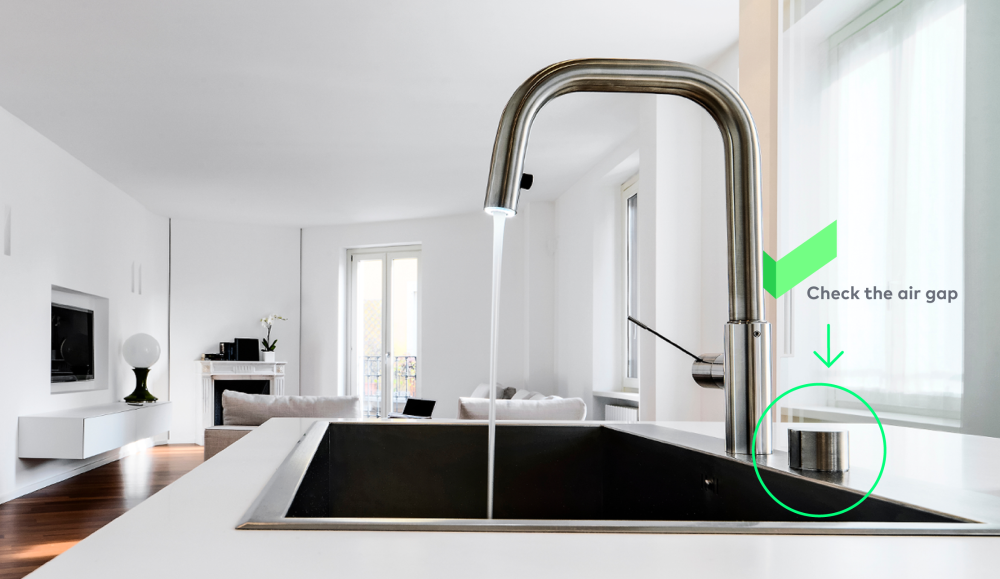
Check the dishwasher air gap
For dishwashers that don’t connect to a garbage disposal, you might experience other potential obstructions in the pipes. You’ll want to see where your dishwasher drain hose connects. Some setups might connect to an air gap, while others might have the hose create a high loop under the sink. These designs help keep wastewater from flowing backward into the dishwasher. However, each design can develop problems that could prevent proper drainage.
See if the air gap has gotten clogged. The air gap should connect to a fitted mount on the sink or a cabinet. The air gap aims to eliminate negative pressure and stop wastewater from returning to the dishwasher. If this portion of the plumping has become obstructed, you’ll want to clean it so that it can work as designed.
If you have a high loop, look at your manual to learn how to tell if the hose has slipped from its proper position. This slippage can also cause a failure in water flow.
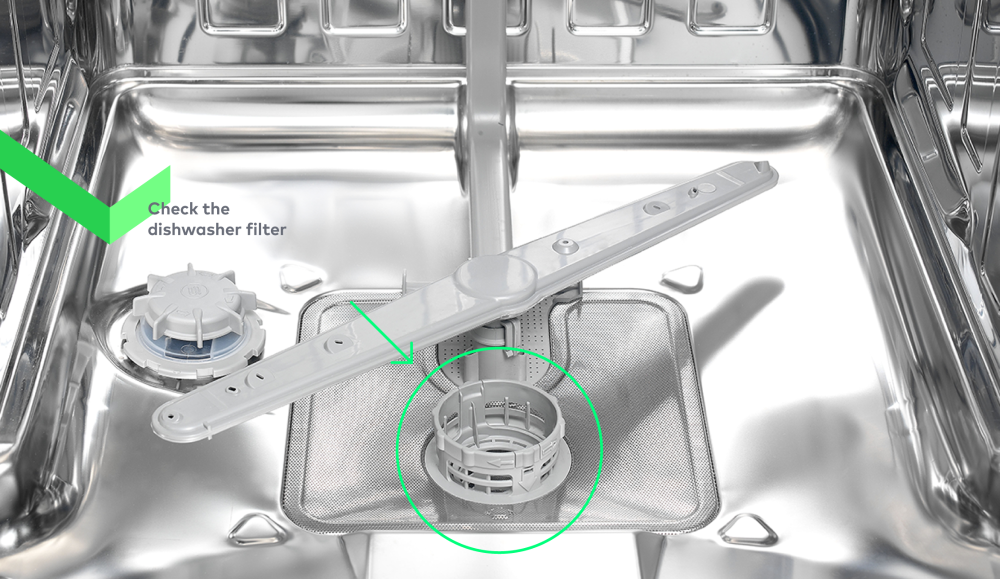
Check the dishwasher filter (if applicable)
Certain models of GE dishwashers have a removable filter. If your model has such a filter, check that it hasn’t become clogged with debris.
To check the dishwasher filter, disconnect your dishwasher from its power source and then remove the filter. If you have a filter, it will be near the bottom of the appliance. Once you have the filter out, give it a good wash with soapy water, removing anything stuck on the filter.
While you look around the bottom of the dishwasher, also check the entire sump, or bottom area, to make sure there’s no remaining debris or food particles that could make it harder for the appliance to drain.
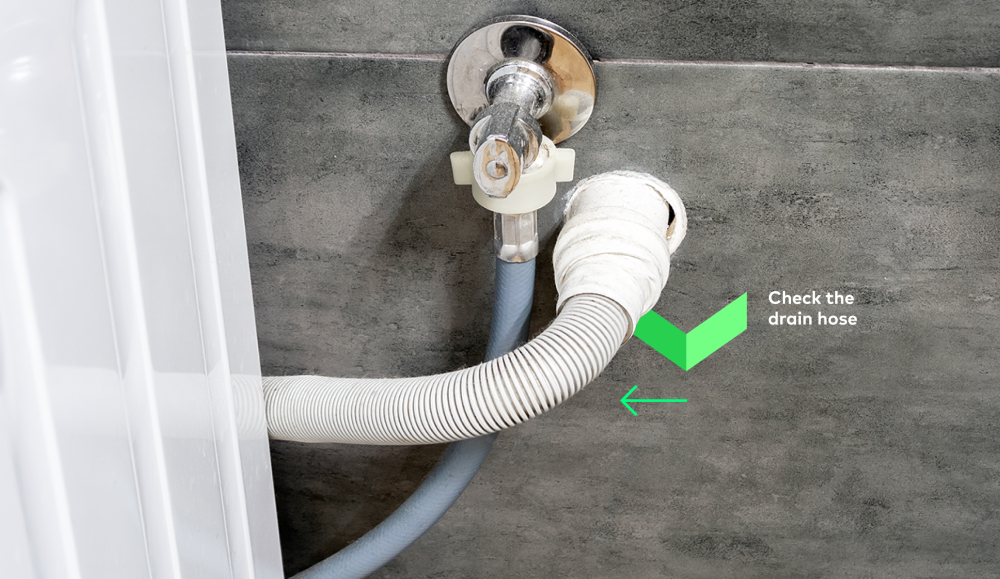
Check the drain hose
You also want to inspect your drain hose for kinks or blockages. To do this, fully detach the drain hose to inspect the interior. A drain snake can help you check the hose for debris, and remove any you find if necessary. You’ll also want to visually inspect the hose, looking for signs of bending and kinking that can seriously disrupt water flow.
You can also check how the appliance is working by putting the hose into a bucket and then running a short dishwasher cycle. This will let you see if the hose works as expected.
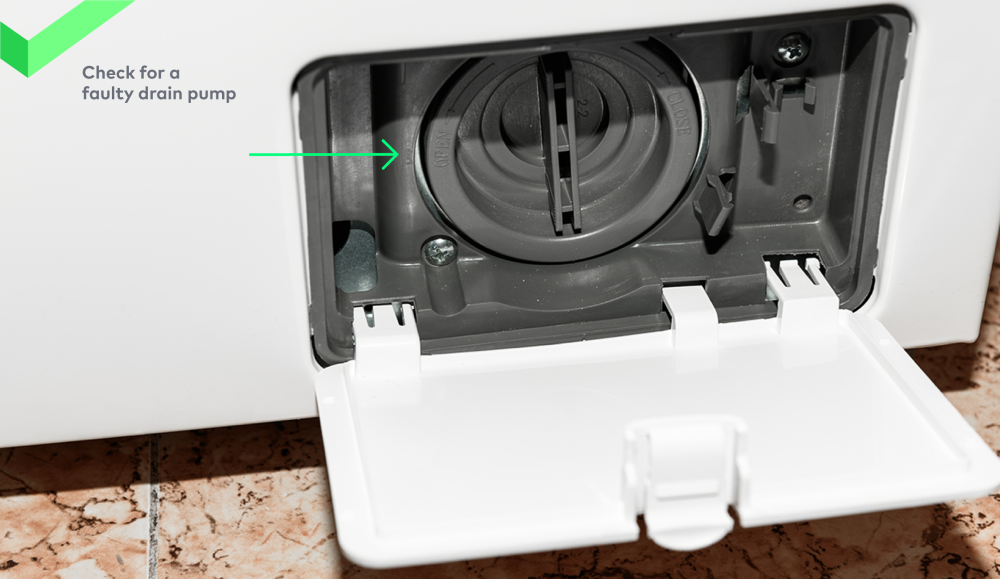
Check for a faulty drain pump
The dishwasher drain pump is a critical component of your dishwasher. If the pump doesn’t work correctly, you won’t be able to use the appliance. However, like other pumps, this one can have mechanical or electrical failures. When you look at your drain pump motor, you might see visual problems, such as a broken drain impeller or debris clogging the space.
To find your pump and give it a good inspection, look at the bottom-front area behind the kick plate or elsewhere in the back panel.
When your drain pump works properly, it should rotate. If you don’t see any rotation, that’s a good indication you might need to replace the pump. Fortunately, a home warranty from Cinch Home Services covers all dishwasher components, including the drain pump. We’ll also connect you to a pre-screened service professional who can help diagnose and remedy the problem.
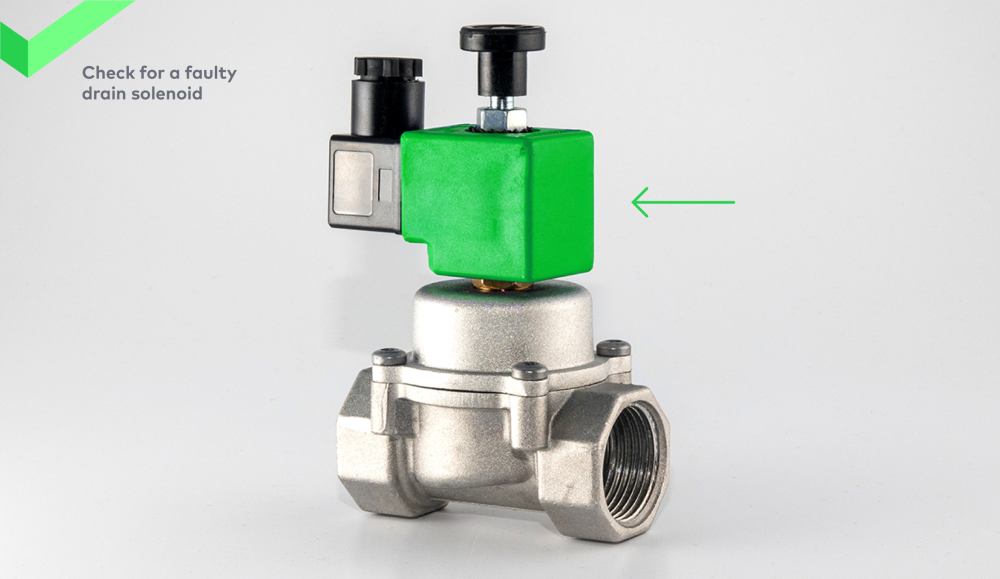
Check for a faulty drain solenoid
The drain solenoid is the area where the water drains from the dishwasher. If this part doesn’t work, the valve that lets the water out of the dishwasher won’t open, and you’ll have a flooded appliance. This part can break if exposed to high or low temperatures beyond what it's design can withstand.
You’ll find the solenoid near the motor or drain pump. You can test it with a multimeter. This handy device can tell you if your solenoid has a continuous electrical path called continuity. However, you’ll likely need to remove the bottom-front kick plate or access panel to reach this component. If your part has malfunctioned and is the source of the trouble, you’ll need to replace it. Then see if the drain cycle works as designed.
GE dishwasher detergent cup not working
The detergent cup in your dishwasher will be one of two types. The first type is circular and rotates open and closed — this is the turn-to-close cup. The second looks more like a rectangle and will clip open and closed.
If your dishwasher cup has trouble locking into place, make sure that the dishwasher dial is entirely in the off position. If it’s left on “drying,” for example, it might prevent the cup from locking shut.
On the other hand, first check how your dishes are loaded if the cup doesn’t open during the cycle. Make sure that nothing sticks out and prevents the cup from opening properly. You also want to check that you haven’t allowed any detergent to harden inside the cup. If you use detergent that was left in the cup or that started to get hard in the box, it could make it difficult for the cup to open. Similarly, make sure that any tablets you use fit in the cup without having to force it closed.
You also want to watch the placement of dishes in the dishwasher. If you block the spraying arm, you might have some residual detergent left in the cup.
GE dishwasher not filling with water
A common reason for a GE dishwasher not filling is the flood float has become stuck. The flood float will typically stop the dishwasher from adding water if there is already too much water in the appliance.
The flood float might become stuck if you run the dishwasher with a clogged disposer. The stuck flood float tells the dishwasher not to add more water, even though there’s no water in the appliance. If this happens, you’ll need to remove the lower rack and tap on the flood float to get it moving again. Once the flood float is unstuck, it should work normally.
GE dishwasher door leaking
Dishwashers come equipped with a special rubber seal that helps prevent water from leaking out as the dishwasher runs. However, as the dishwasher ages, this important strip can begin to break down.
You might notice that the seal starts to become brittle and cracked. It can also start to leak. If your dishwasher leaks water during its cycles, open the appliance to look at this seal carefully. Look for signs of the seal beginning to break down or otherwise no longer completing its job well.
If you discover that a degrading seal explains your leaking door, you’ll probably have to replace the seal to prevent the problem from happening again.
GE dishwasher emitting bad smell
Dishwashers boast that they can get dishes remarkably clean, even if the dishes are covered with food. However, it’s important to remember that food particles on the dishes now sit in the dishwasher. Anything that can’t drain with the water can get trapped inside. This stuck food can then smell, creating a bad odor from the dishwasher.
The best way to avoid odor problems is to keep your dishwasher clean. To keep your dishwasher clean, do some tasks daily, while you can do others weekly.
Each day, pick up any food particles that you see along the bottom of the dishwasher. This can go a long way in keeping the appliance cleaner and running smoothly. About every one to two weeks, give the dishwasher’s interior a gentle wipe down to avoid grime buildup.
You should also check the user’s manual and look at how you can remove the filter from the bottom of the appliance. Also, give your filter a gentle cleaning periodically to make sure it works well.
Finally, you’ll want to do a deeper cleaning about every one to two months. Run the wash cycle on the appliance using hot water and place a cup of vinegar inside to break up any other food particles and residual dishwasher detergent. The rest of the dishwasher can remain empty.
How much do dishwasher repairs cost?
If your dishwasher develops problems that you can’t quickly fix yourself and these solutions don’t work, you might need to call in a professional. According to HomeAdvisor, repairing a dishwasher can cost anywhere between $50 and $600.
It depends on the dishwasher model, how old the appliance is, the part you need to replace, the service professional’s experience, and whether you have a home warranty.
Dishwashers are covered under a Cinch warranty
Knowing how to troubleshoot common GE dishwasher problems can help keep your quality dishwasher running for years to come. However, there are some problems you might not be able to fix yourself.
That’s where a home protection plan can make a big difference. In particular, a Cinch Appliances plan covers your dishwasher in case of unexpected breakdowns due to normal wear and tear. If something goes wrong with your covered appliance, all you have to do is request service, pay a preset deductible (that you choose), and we’ll find a qualified service professional to help figure out the issue.
Experience the peace of mind that comes with having a Cinch home warranty. Request a free instant quote today.
GE dishwashers have a reputation for reliability and quality, but sometimes they develop problems. Here are common ways to troubleshoot your dishwasher.
